Discover the Fantastic History of Black Hawk State Historic Site
Sep 07, 2018 • Arts, Culture & History
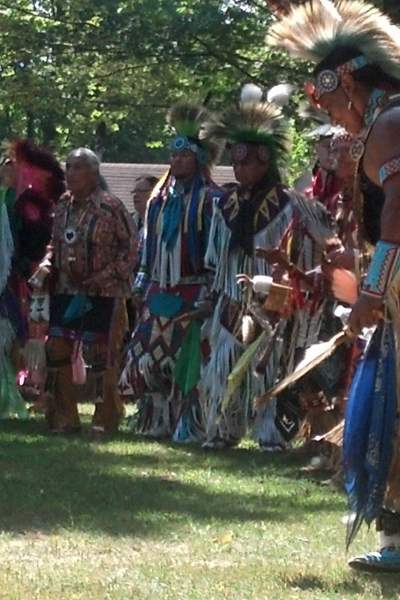
Do you like historical adventures? Then discover the fantastic history of Black Hawk State Historic Site.
Enjoy the museum, lodge and trails throughout the park. This is one of Illinois' 7 Wonders! From Native American settlements, to a nineteenth-century amusement park, to a Native American museum built by the Civilian Conservation Corps, the Black Hawk State Historic Site has a beautiful story to tell, and beautiful surroundings to explore.
Native American Heritage
The area, in the Quad Cities, is a wooded, steeply-rolling 208-acre tract bordering the Rock River. It was first occupied by Native Americans some 12,000 years ago, and for nearly a century beginning about 1730, the Sauk and Meskwaki (Fox) tribes made their home at the site.
The Sauk formed the village of Saukenuk along the Rock River. It became the largest Native American settlement in North America, with an estimated population of 6,000 to 7,000 people. The park is named after the great Sauk warrior Black Hawk.
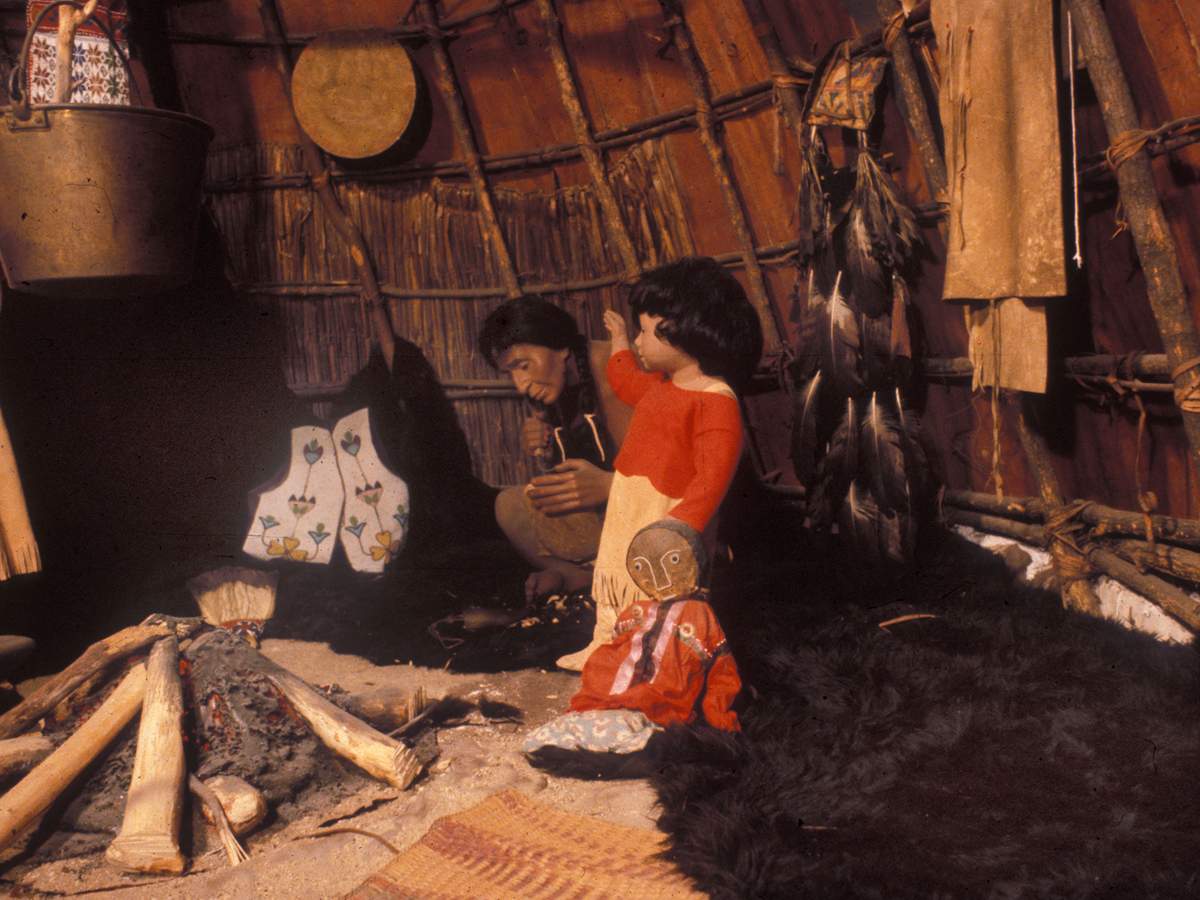
John Hauberg Indian Museum - Replica of Sauk Village home
You can discover the history of these two tribes at John Hauberg Indian Museum inside Watch Tower Lodge, a 1930s-era lodge at the site. There, you’ll see full-size replicas of Sauk winter and summer houses and dioramas depicting the activities of the Sauk and Fox people. An original Sauk canoe is on display along with many artifacts.
Nineteenth-Century Amusements
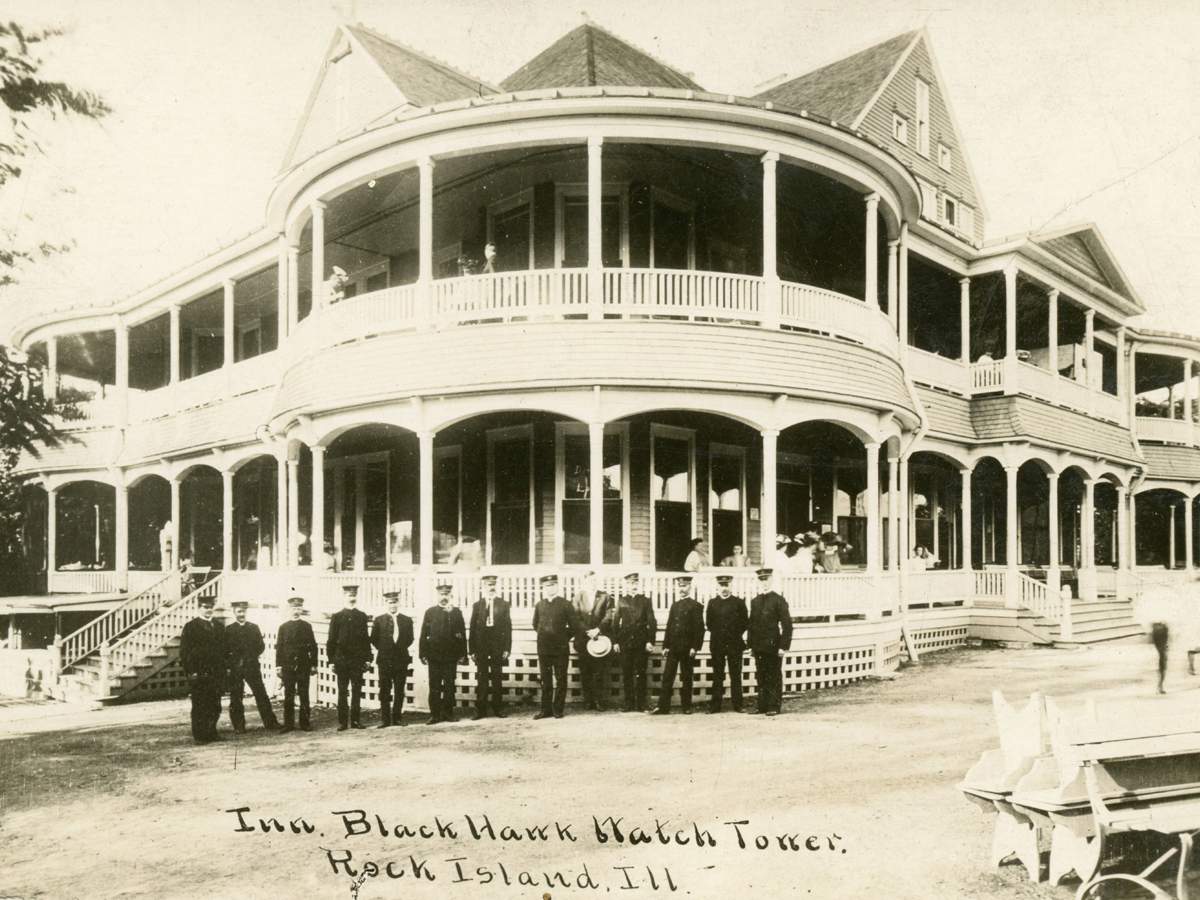
The original Watch Tower Inn during the park's amusement park era.
Come 1882, the site became home to the Watch Tower Amusement Park, with concerts, operas, fireworks, bowling, outdoor movies, and amusement rides. The park also boasted a figure-eight roller coaster and the memorable “Shoot the Chutes” toboggan slide, invented in Rock Island.
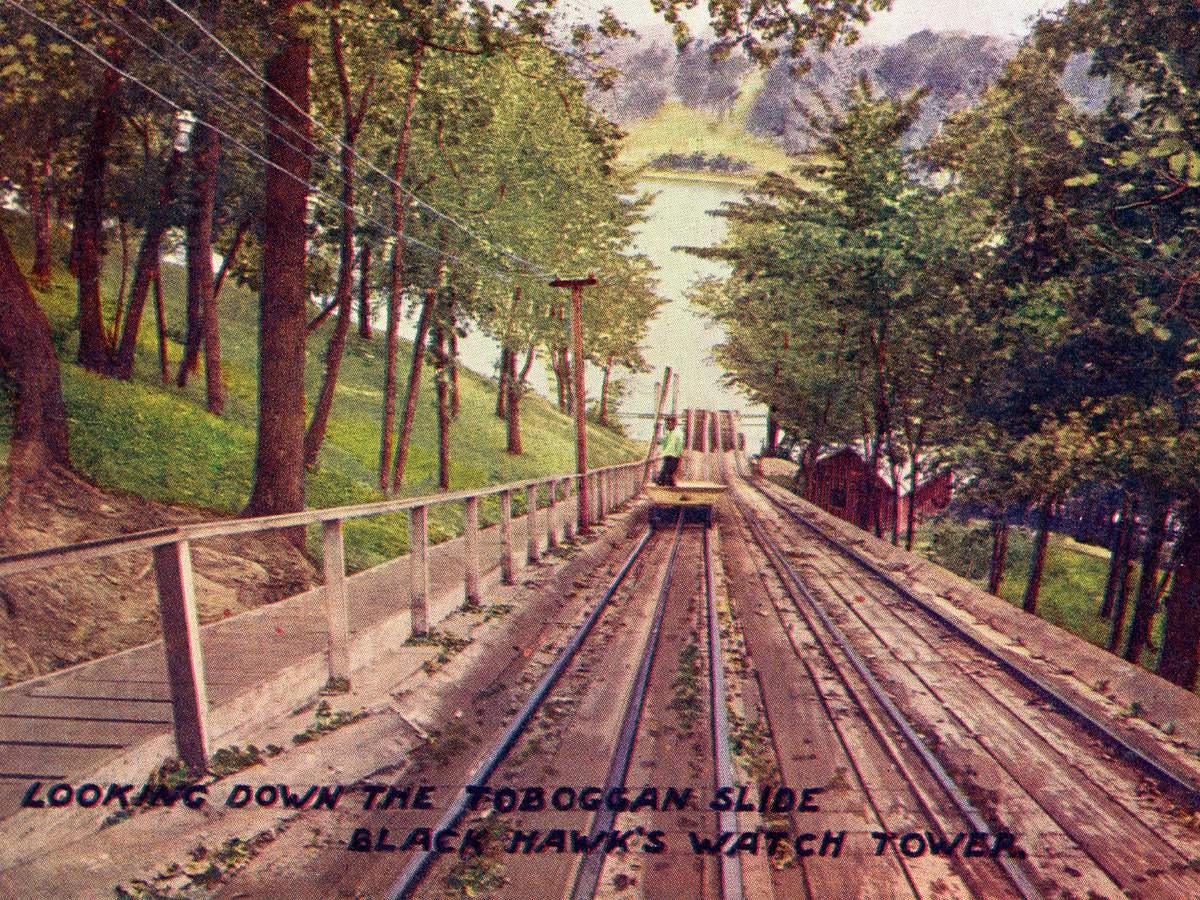
Postcard showing the Shoot the Chutes toboggan ride that was once part of the amusement park.
The “Chutes”— flatboats with side runners that slid on a greased track—carried riders down the bluff at speeds of up to 80 miles per hour. After shooting down the slope, the boat bounced across the waters of the Rock River. Then the conductor poled the boat back to the slide, and an electric cable hauled it back to the top.
The Beginnings of Black Hawk State Park
In 1927, the Illinois state legislature appropriated funds for the purchase of Watch Tower Park, renaming it Black Hawk State Park. The amusement park was demolished to make way for Watch Tower Lodge, which still stands today.
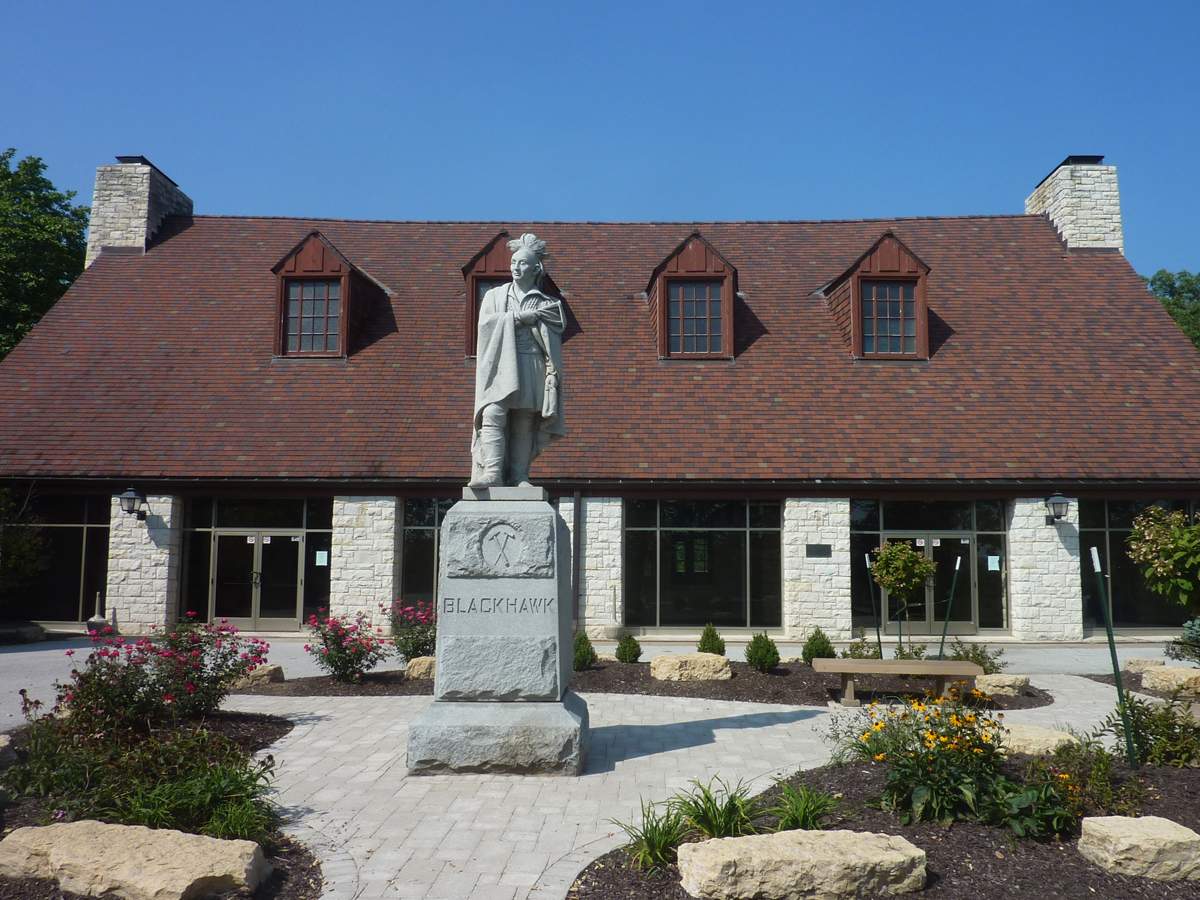
Watch Tower Lodge today houses the museum, CCC exhibit and large banquet hall with two murals depicting the Sauk Tribe.
The construction of the site fell to the Civilian Conservation Corps which recruited more than 200 veterans of World War I to carry the work out between 1933 and 1935. In exchange for clothing, room, board, food and $1 a day, they built six miles of hiking trails, trail structures, parking lots, picnic shelters, and planted thousands of trees and wildflowers. They also constructed two-thirds of the present-day lodge, which contains two murals painted in 1936 by Works Progress Administration artist Otto Hake. The murals depict the seasonal activities of the Sauk and Fox people. A permanent exhibit in the lodge tells all kinds of stories about the camp and the men who called it home.
Black Hawk’s Legacy
In 1979, recognizing the importance of Native American presence in Rock Island, the State of Illinois changed its designation from “Park” to “Historic Site.” In 1984, the north section of Black Hawk was declared a nature preserve. Its majesty and beauty did not go unnoticed by the Illinois public, who voted it one of the 7 Wonders of Illinois in 2007.
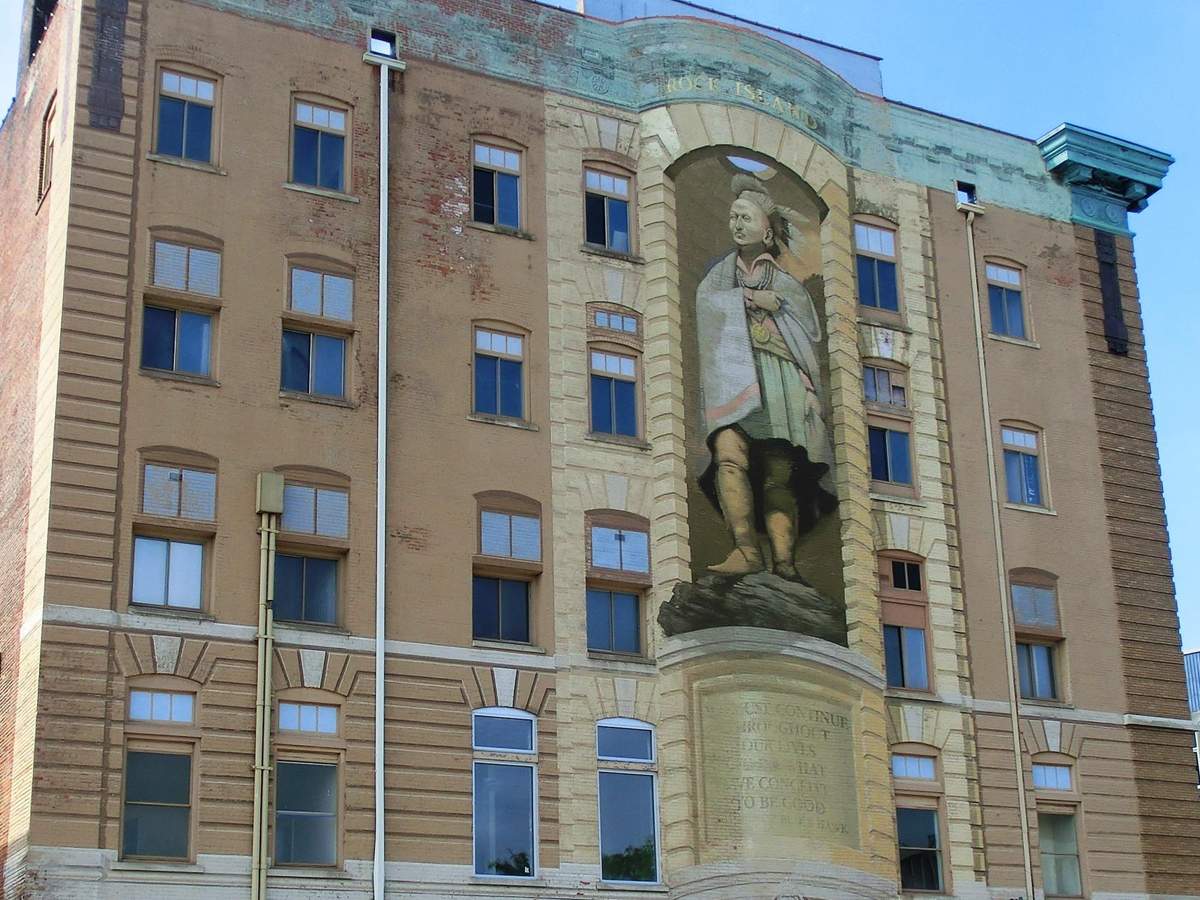
Black Hawk mural on building facing the Mississippi River in Downtown Rock Island, by artist Richard Hass.
Black Hawk’s influence is plainly visible in other parts of the Quad Cities, too. Businesses and a college bear his name, and the Putnam County Historical Society’s museum presents exhibits on the tribes. A must-see is the 60-foot high Black Hawk mural by Richard Hass in downtown Rock Island. Facing the Mississippi River, the mural contains a quote from Black Hawk, “We must continue throughout our lives to do what we conceive to be good.”
Come and discover Black Hawk’s legacy, and why the Historic Site is one of Illinois’ 7 Wonders. Bring your family and friends and walk the trails and grounds that the Sauk and Fox once called home, reflecting on Black Hawk’s words, and what we ought to do that is “good.”
Share your Moments
#EnjoyIllinois



